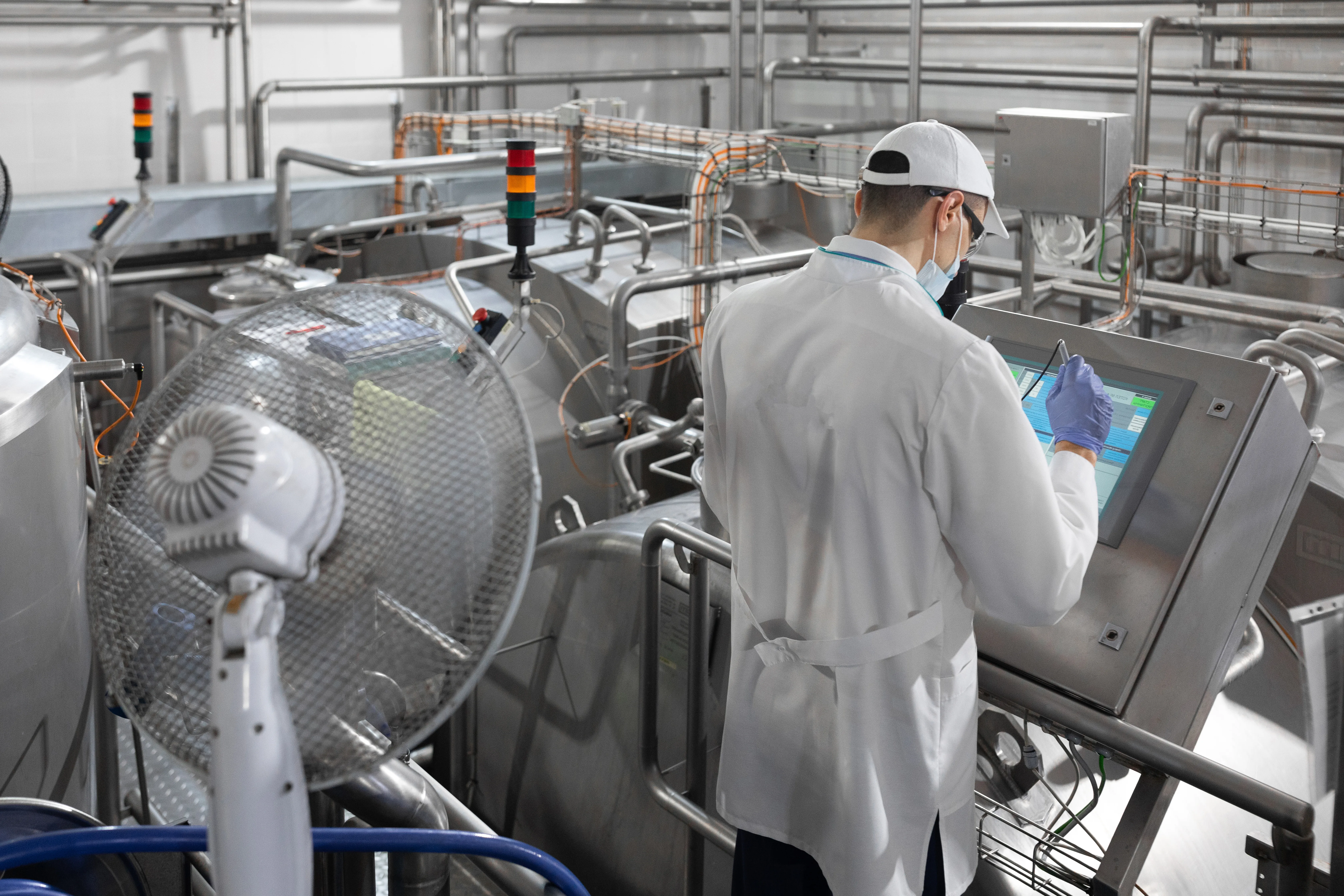
The final stage in pork production is the transportation of finishing pigs to the slaughterhouse. The absence of food (fasting) is one of the parameters that influences the pigs' ability to cope with stress during transportation and shelter.
Implementation Method
When implemented correctly, with attention to local factors, pre-slaughter fasting can improve animal welfare and carcass hygiene.
The duration of fasting before slaughter is important for the success of the production practice. In practice, a fasting period before slaughter between 12 and 18 hours increases pork safety, pork quality, and animal welfare.
This means that precise communication between producer and abattoir is essential when planning fasting and storage periods to avoid technological problems with pork carcass quality (such as pale, soft, and exudative meat (PSE) or dark, firm, and dry meat (DFD)).
These factors influencing pork quality modification have been the subject of the report "Fasting Finisher Pigs before Slaughter Influences Pork Safety, Pork Quality, and Animal Welfare," prepared by Bert Driessen, Louis Freson, and Johan Buyse from the Laboratory of Livestock Physiology, Department of Biosystems-Leuven, Belgium, from which we present the main ideas.
Fasting Guidelines
The final stage in pork production is the transportation of finishing pigs to the abattoir. From an animal perspective, it is a very complex and stressful event. Stress factors for animals vary depending on, for example, housing, climate, and handling technique and have an impact on the animal.
Fasting is one of the parameters that influences pigs' ability to cope with stress during transportation and shelter. The usefulness and impact of fasting differ from species to species. For example, gastrointestinal anatomy, fatigue, and susceptibility to stress influence the need for and impact of fasting.
Therefore, fasting guidelines are species-specific. Fasting is a common practice for farm preparation of pigs before slaughter. During fasting, pigs are denied access to food.
However, it should be emphasized that fasting does not mean that drinking water is excluded. On the contrary, drinking water should be available to pigs whenever possible during the fasting period (especially on the farm and in the pen).
The Effects of Fasting
The main effect of depriving pigs of food before slaughter is weight loss. In the first 24 hours of fasting, pigs can lose up to 5% of their live weight, at an approximate rate of 0.25 kg per hour. During that period, live weight losses are more related to urine and feces excretion than to body tissues, and consequently, carcass weight is not affected.
This can be clarified by the fact that feeds consumed 9-10 hours before slaughter remain in the intestine at the evisceration point and are not converted into carcass weight gain. The weight of live animals increases by feeding pigs before slaughter, but it does not influence carcass weight.
Between four to eight hours after intake by animals, the food will be absorbed in the small intestine, and most nutrients will be transported into the bloodstream nine hours later. Therefore, feeds consumed by pigs just a few hours before slaughter can be considered wasted.
As a result, keeping animals on the farm before transport contributes to a saving of 2 kg of feed/pig for the farmer. Extended storage time reduces carcass yield due to the impact on fasting time.
If pigs miss one or more meals within a 24-hour period, they do not compensate for the missed food intake. When fasting is longer than 24 hours, catabolism of body reserves is induced in finishing pigs.
Gastrointestinal Tract Activity
The amount of waste to be eliminated at the slaughterhouse can be reduced with a waiting period of up to 48 hours. Smaller stomach weights have been determined in pigs fed ad libitum compared to pigs with restricted feeding.
This difference in stomach weight is caused by the intake of smaller food portions at each meal in pigs fed ad libitum, which favors feed digestion and consequently accelerates stomach emptying.
According to Guise et al., gastric emptying rate in fasting pigs is affected by smaller particle size of feed and granulation. Feed composition can also affect efficiency rate, as shown by Magras et al., in pigs fed with corn or wheat-based diets in 3 to 4 meals/day and kept fasting for 22 hours before slaughter.
Wheat-based diets slow gastric emptying due to their higher fiber and carbohydrate content. Wheat-based diets have a lower efficiency rate (87.9%) compared to corn-based diets (95.4%).
Thus, a longer withdrawal period of 22 hours is recommended for pigs fed with wheat-based diets to increase fasting efficiency before slaughter and to minimize intestinal filling and the risk of intestinal perforation during the slaughter and evisceration process.
Therefore, not only stomach weight but also the type of stomach contents should be monitored in audits for possible sources of carcass contamination at the slaughterhouse.
It should be noted that pigs consume most of their daily food intake in the 12 hours between approximately 0600 h and 1800 h. This affects the timing of fasting initiation and its duration. Pigs that start fasting at 06:00, compared to 18:00, likely have very different amounts of food in their stomach and gastrointestinal tract.
Meat Contamination
Food safety is the main concern of consumers and the primary issue for public responsibility in meat marketing. Food withdrawal represents ±70% of the variation in carcass contamination rate.
The higher the content of the gastrointestinal tract at slaughter, the greater the risk of tearing these tissues during evisceration and the greater the risk of carcass contamination.
It is known that the elimination rate of Salmonella in animals is increased both with food withdrawal time and with stress. The presence of manure on the floor of trucks or pens is a significant potential source of fecal bacteria in carcass contamination.
Stress factors promote gastric emptying rate, E. coli proliferation, and Salmonella population in intestines and their excretion into the environment. According to Berends et al., carcasses of live pigs carrying Salmonella at the time of slaughter are 3 to 4 times more likely to test positive for Salmonella than carcasses of animals without Salmonella.
Behavior
Some reports indicate that pigs subjected to food withdrawal before slaughter are easier to move and handle during loading, transportation, and unloading. The results of Dalla Costa et al.'s study are in contrast to these findings. Dalla Costa et al. studied the impact of 24-hour fasting before slaughter on two groups of pigs with different fasting regimes.
One group fasted for 18 hours on the farm before transport and 6 hours before slaughter (including 2 hours of transport and 4 hours of storage), while the other group started fasting at departure from the farm (2 hours of transport plus 22 hours).
Pigs fasting on the farm showed more regression behavior and turning back and vocalized more during loading. In addition, Acevedo-Giraldo et al. described in their research that pigs fasted for 8 hours on the farm, when driven, tried to return more often to the shelter compared to pigs not fasting.
Hunger and food restriction induce frustration and excitement and explain the refusal behavior. According to Dalla Costa et al., pigs kept fasting on the farm tended to have a shorter latency to lie down in the abattoir.
Meat quality
Pre-slaughter fasting can affect meat quality through an increase in pHu. In contrast, several other studies have described no or limited impact of feed withdrawal time on meat quality.
Differences in the level of stress or activity imposed on pigs prior to slaughter and the muscle used to assess meat quality in each study may explain the discrepancy between reported results.
When fasting is not confounded by other pre-slaughter practices (eg, mixing, high ambient temperature, etc.), muscle glycogen is not depleted to an extent where pork quality is affected.
However, the reduction in muscle glycogen may be sufficient to affect the final pH of muscles that are involved in the posture and weight of the animal and/or that have a lower glycolytic potential.
Pre-slaughter fasting can be considered a tool to increase final muscle pH and decrease the incidence of pale, soft, exudative (PSE) pork.
A fasting period of less than 18 hours increases the prevalence of PSE meat. On the other hand, long periods of fasting (>22 h) induce muscle glycogen depletion and increase the risk of DFD (dark, firm, dry) meat.
Mortality
The mortality of fasted pigs before slaughter decreases the risk of mortality during transport to the slaughterhouse. Fasted pigs are at greater risk of transport sickness and vomiting during transport than fasted pigs.
This situation leads to higher mortality, especially in summer and in animals genetically susceptible to stress. Mortality of non-fasted pigs during transport is caused by the pressure of the full stomach on the vena cava, resulting in decreased efficiency of blood flow.
The mortality rate of transported pigs that were posted 8-18 hours before loading is significantly lower than that of pigs loaded with full stomachs.





